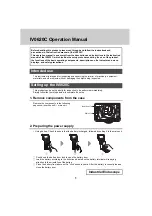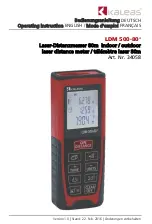
1 Introduction
6
SMARTS II
1
Introduction
This chapter contains a short introduction about measuring
electromagnetic fields, about using the SMARTS II, and about the
structure of this Operating Manual.
1.1 Measuring electromagnetic fields
1.3 About this Operating Manual
1.1 Measuring electromagnetic fields
In today’s world, many industries utilize equipment that generates
electromagnetic fields. Our modern need for communications as well as
the efficiency of electromagnetic heating systems and the safety that
radar systems provide us are just a sample of the applications that are
benefitted by exploitation of the electromagnetic spectrum. We also have
various engineering considerations as well as regulatory requirements to
use the electromagnetic spectrum wisely. Various authorities have long
defined limit values designed to protect users from the dangers of
exposure to such emissions, and the SMARTS II is an effective tool to
help companies and individuals demonstrate compliance.
1.2 About this monitor
The SMARTS II area monitors provide continuous detection of RF
radiation within a specific area. The SMARTS II uses ultra-wideband
sensor technology. The result is an area monitor that covers most of the
usable RF spectrum in a single monitor with shaped frequency response
that matches the safety standard used to determine compliance. The
dual sensor design detects all types of electric fields from 2 MHz to 100
GHz. The microwave portion of the sensor employs thermocouple
detectors so that radar signals are accurately converted to true RMS
values while the diode design used for the lower frequencies provides
RMS detection even in very complex, multi-signal environments.
SMARTS II monitors respond equally to all polarizations and cover an







































